This week we are testing the serial output by the Arduino. This specific example has a nice graphical representation that visualizes the serial output that changes according to the potentiometer’s knob turning.
To start, we will need the following materials:
We will follow this schematic map in order to wire the components together:
This is what the end result should look like:
Once everything is wired, use this code in Processing
import processing.serial.*;
float xPos = 0; // horizontal position of the graph
void setup () {
Serial myPort;
size(800, 600); // window size
println(Serial.list()); // List all the available serial ports
String portName = "/dev/tty.usbmodem1421";
myPort = new Serial(this, portName, 9600);
background(#081640);
}
void draw () {
// nothing happens in draw. It all happens in SerialEvent()
}
void serialEvent (Serial myPort) {
// get the byte:
int inByte = myPort.read();
// print it:
println(inByte);
float yPos = height - inByte;
// draw the line in a pretty color:
stroke(#A8D9A7);
line(xPos, height, xPos, height - inByte);
// at the edge of the screen, go back to the beginning:
if (xPos >= width) {
xPos = 0;
// clear the screen by resetting the background:
background(#081640);
}
else {
// increment the horizontal position for the next reading:
xPos = xPos + .5;
}
}
Run the code and turn the potentiometer knob. You should see something similar to this!
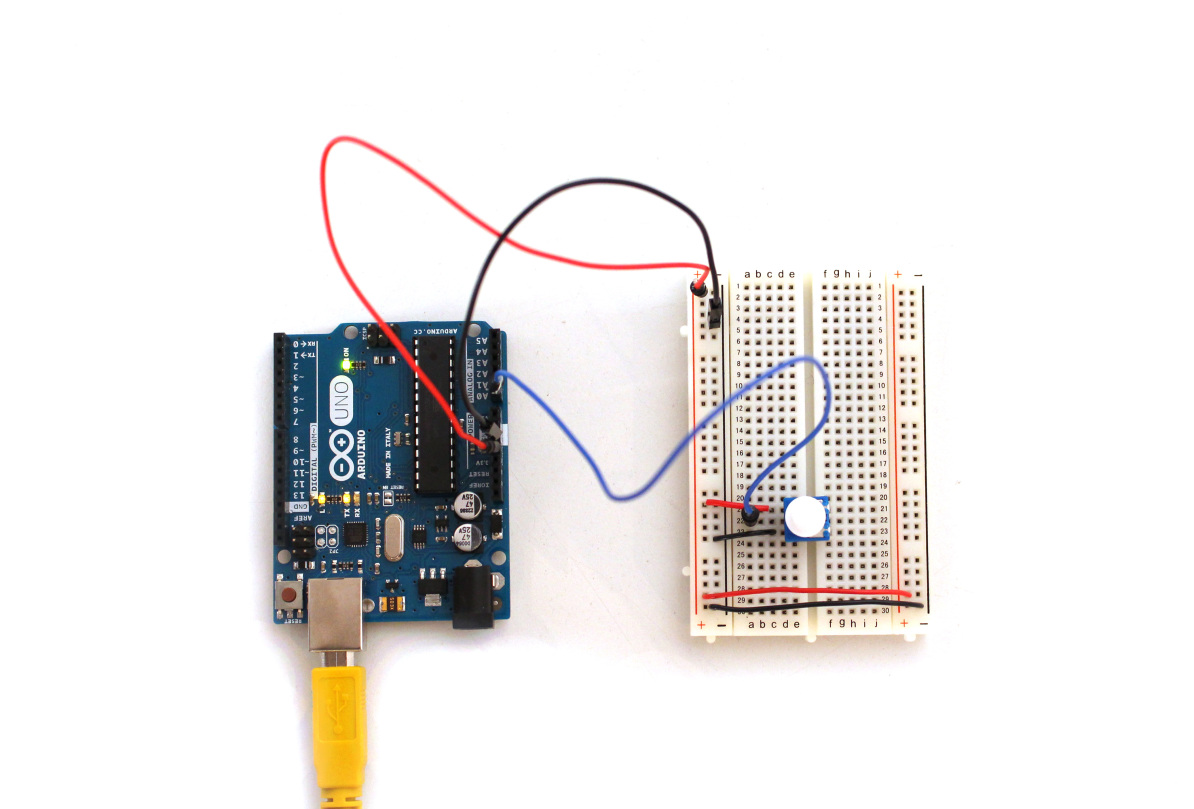
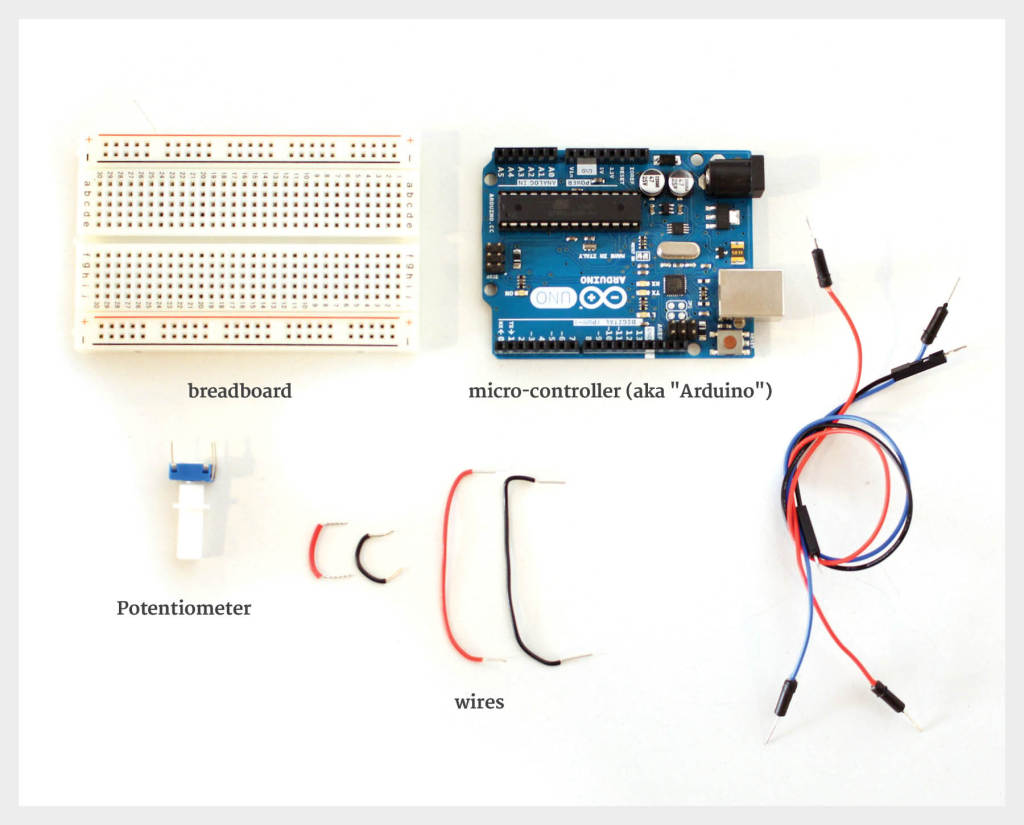
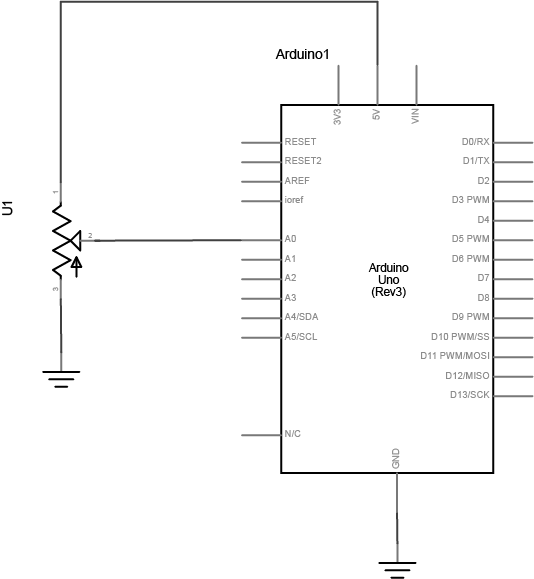
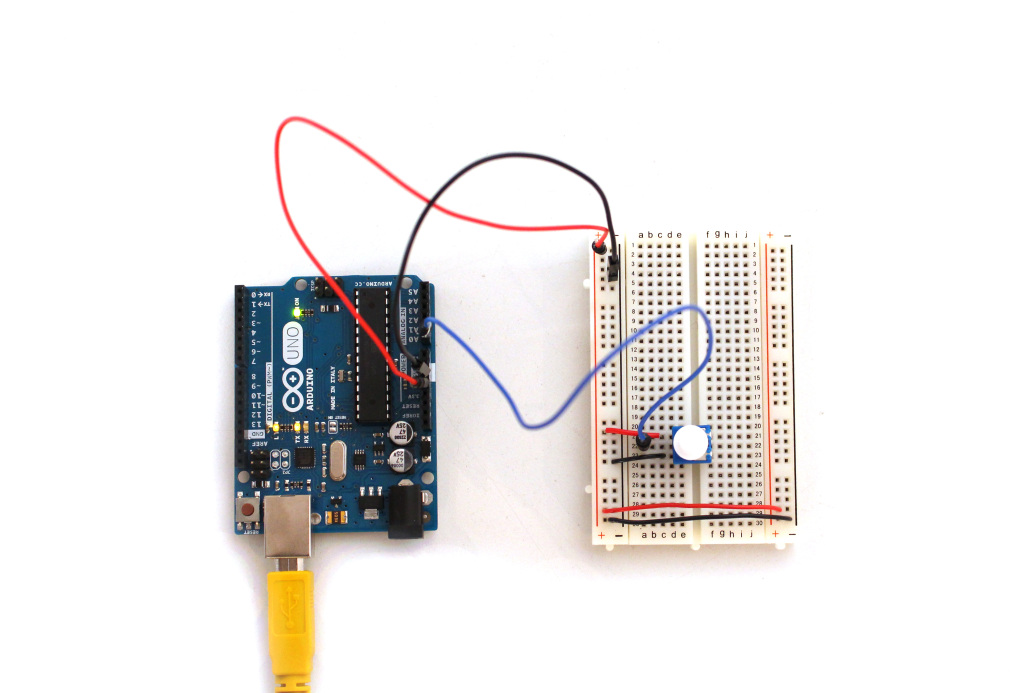
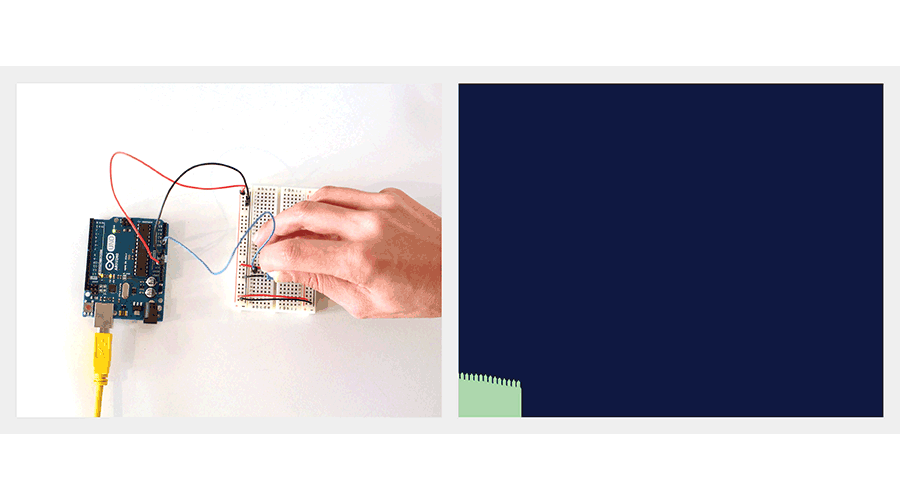
1 Comment